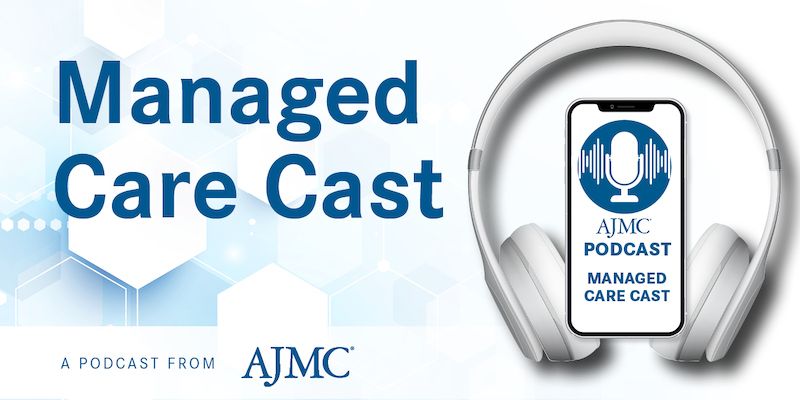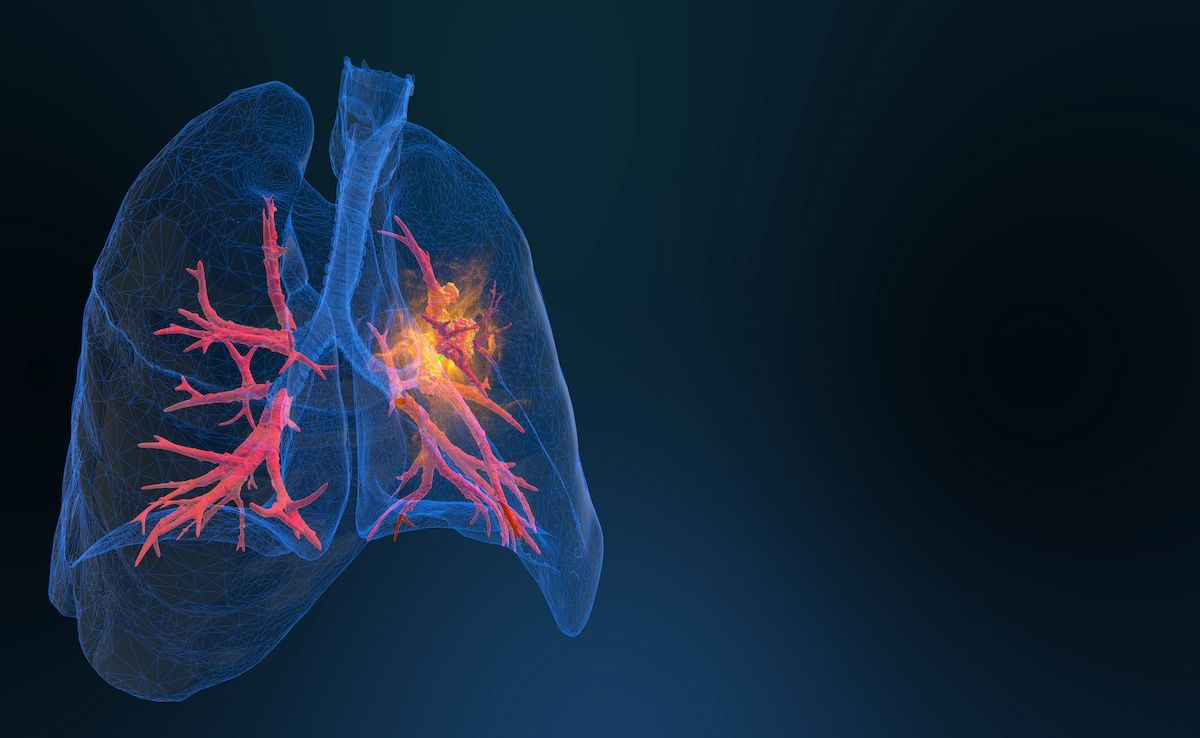News
Article
Chemo Plus IO Offers Survival Benefit in ES-SCLC vs Chemo Alone in Real-World Study
Author(s):
Key Takeaways
- Combining immunotherapy with chemotherapy may improve survival in extensive-stage small cell lung cancer without increasing treatment-related toxicity.
- The study showed a median overall survival of 14.9 months with combination therapy versus 11.9 months with chemotherapy alone.
Combining immunotherapy with chemotherapy shows promise in enhancing survival rates for extensive-stage small cell lung cancer (ES-SCLC).
Adding immunotherapy to chemotherapy as a first treatment for certain cases of small cell lung cancer (SCLC) may help improve historically poor outcomes, suggest new study findings.1
Combining immunotherapy with chemotherapy shows promise in enhancing survival rates for extensive-stage small cell lung cancer.
Image credit: PRASANNAPIX - stock.adobe.com

The findings, coming from real-world practice at a single treatment center in China, show survival improvements with the treatment combination without compromising safety, a positive sign for potential prognosis of extensive-stage SCLC (ES-SCLC).
“While conventional chemotherapy has relatively high sensitivity in the treatment of ES-SCLC, many patients quickly develop resistance to chemotherapy,” wrote the researchers. “Therefore, a single chemotherapy regimen has significant limitations in the treatment of ES-SCLC. Studies have shown that the combination of immunotherapy with chemotherapy can further improve patient survival without significantly increasing treatment-related toxicity.”
The researchers retrospectively reviewed data on 349 patients with EC-SCLC, half of whom received combination treatment while the other half received chemotherapy alone. Chemotherapy consisted of platinum-based drugs and etoposide, and immunotherapy was given with serplulimab (48.6%), atezolizumab (Tecentriq; Genentech) (30.1%), or durvalumab (Imfinzi; AstraZeneca) (21.4%).
All 3 immunotherapies are approved in China,2-4 and atezolizumab and durvalumab have been cemented as standard-of-care options in the United States. Not yet approved in the United States, serplulimab, in combination with chemotherapy, is currently going head-to-head against atezolizumab in the ASTRIDE trial.5 The immunotherapy treatment received an orphan drug designation from the FDA back in 2022.6
Between 2018 and 2023, patients in the real-world Chinese study were followed as they received treatment. Median overall survival (OS)—the study’s co–primary end point—with the chemo-immunotherapy (CIT) combination was 14.9 months (range, 3.4-67.3 months), a significant improvement compared with the 11.9-month (range, 3.1-63.6 months) median OS observed with chemotherapy alone (P < .001). However, the researchers noted that in multivariate analysis, OS benefit was not statistically significant (HR, 1.193; 95% CI, 0.956, 1.490; P = .119).
At 3 years, 19.5% of patients receiving CIT were alive compared with 9.6% of patients receiving chemotherapy alone. With a limited follow-up period, the researchers noted that long-term OS results may differ.
For the study’s other co–primary end point, progression-free survival (PFS), the combination yielded a median PFS of 5.4 months (range, 1.6-43.6 months) vs 3.8 months (range, 1.1-32.6 months) with chemotherapy, a significant improvement even in multivariate analysis (hazard ratio, 1.466 (95% CI, 1.179-1.822; P < .001).
Across both treatment groups, the researchers observed no significant differences. The majority (59.5%) of side effects were grade 1 or 2, and there were no grade 5 side effects reported. Overall, 83.8% of the 173 patients receiving CIT experienced adverse events, with 45.1% experiencing adverse events due to the chemotherapy and 38.7% experiencing side effects due to the immunotherapy. In the chemotherapy group, 79% of patients experienced adverse events.
“Despite the promising efficacy and tolerability of chemotherapy combined with immunotherapy, several challenges remain,” wrote the researchers. “First, some patients experience immune-related adverse events after immunotherapy, and optimizing the management of these adverse reactions is an important issue in clinical practice. Second, there are currently no definitive biomarkers to effectively predict which ES-SCLC patients will respond to immunotherapy.”
The researchers suggest that future research assess how factors such as PD-L1 expression levels and tumor mutation burden impact treatment outcomes in order to better personalize treatment in practice.
References
- Zhou J-X, Sun Y-C, Xiao L, et al. Efficacy analysis and prognostic factors of first-line chemotherapy combined with immunotherapy in extensive-stage small cell lung cancer: a real-world study. Sci Rep. Published online April 16, 2025. doi:10.1038/s41598-025-98018-8
- Henlius’ novel anti-PD-1 mAb HANSIZHUANG (serplulimab) approved for the treatment of ES-SCLC. Henlius. Published January 17, 2023. Accessed April 24, 2025. https://www.henlius.com/en/NewsDetails-3949-26.html
- Imfinzi approved in China for the treatment of extensive-stage small cell lung cancer. AstraZeneca. Published January 19, 2021. Accessed April 24, 2025. https://www.astrazeneca.com/media-centre/press-releases/2021/imfinzi-approved-in-china-for-extensive-stage-sclc.html#!
- Roche gets Chinese approval for Tecentriq plus chemotherapy to treat ES-SCLC. Pharmaceutical Business Review. Published February 14, 2020. Accessed April 24, 2025. https://www.pharmaceutical-business-review.com/news/roche-chinese-tecentriq-chemotherapy/
- Dowlati A, Wu E, Puri, et al. PP01.35 Serplulimab vs atezolizumab added to chemotherapy in patients with treatment-naive ES-SCLC in the United States – ASTRIDE trial in progress. J Thorrac Oncol. 2024;19(S7):e20-e21.
- Henlius' serplulimab granted orphan-drug designation in the United States for small cell lung cancer. Henlius. Published April 7, 2022. Accessed April 24, 2025. https://www.prnewswire.com/news-releases/henlius-serplulimab-granted-orphan-drug-designation-in-the-united-states-for-small-cell-lung-cancer-301520127.html

Insufficient Data, Disparities Plague Lung Cancer Risk Factor Documentation




